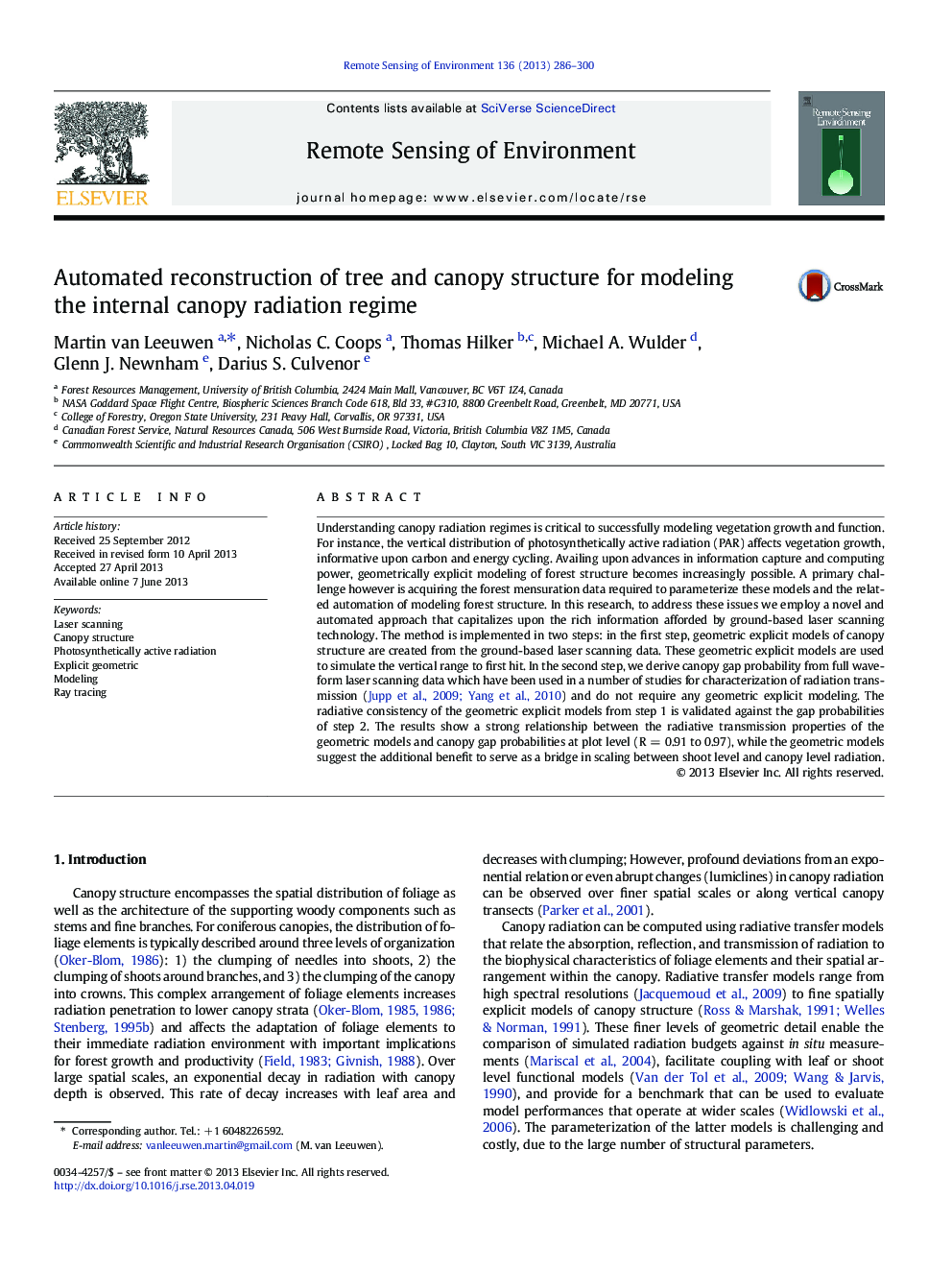| کد مقاله | کد نشریه | سال انتشار | مقاله انگلیسی | نسخه تمام متن |
|---|---|---|---|---|
| 6347419 | 1621264 | 2013 | 15 صفحه PDF | دانلود رایگان |
• Automation of a processing pipeline for virtual modeling of forest structure.
• Use of traditional forest inventory data for simulating radiative transfer.
• Use of within and between crown shading for simulating radiative transfer.
• Validation of simulated radiative transfer against canopy gap probability.
Understanding canopy radiation regimes is critical to successfully modeling vegetation growth and function. For instance, the vertical distribution of photosynthetically active radiation (PAR) affects vegetation growth, informative upon carbon and energy cycling. Availing upon advances in information capture and computing power, geometrically explicit modeling of forest structure becomes increasingly possible. A primary challenge however is acquiring the forest mensuration data required to parameterize these models and the related automation of modeling forest structure. In this research, to address these issues we employ a novel and automated approach that capitalizes upon the rich information afforded by ground-based laser scanning technology. The method is implemented in two steps: in the first step, geometric explicit models of canopy structure are created from the ground-based laser scanning data. These geometric explicit models are used to simulate the vertical range to first hit. In the second step, we derive canopy gap probability from full waveform laser scanning data which have been used in a number of studies for characterization of radiation transmission (Jupp et al., 2009 ; Yang et al., 2010) and do not require any geometric explicit modeling. The radiative consistency of the geometric explicit models from step 1 is validated against the gap probabilities of step 2. The results show a strong relationship between the radiative transmission properties of the geometric models and canopy gap probabilities at plot level (R = 0.91 to 0.97), while the geometric models suggest the additional benefit to serve as a bridge in scaling between shoot level and canopy level radiation.
Journal: Remote Sensing of Environment - Volume 136, September 2013, Pages 286–300
